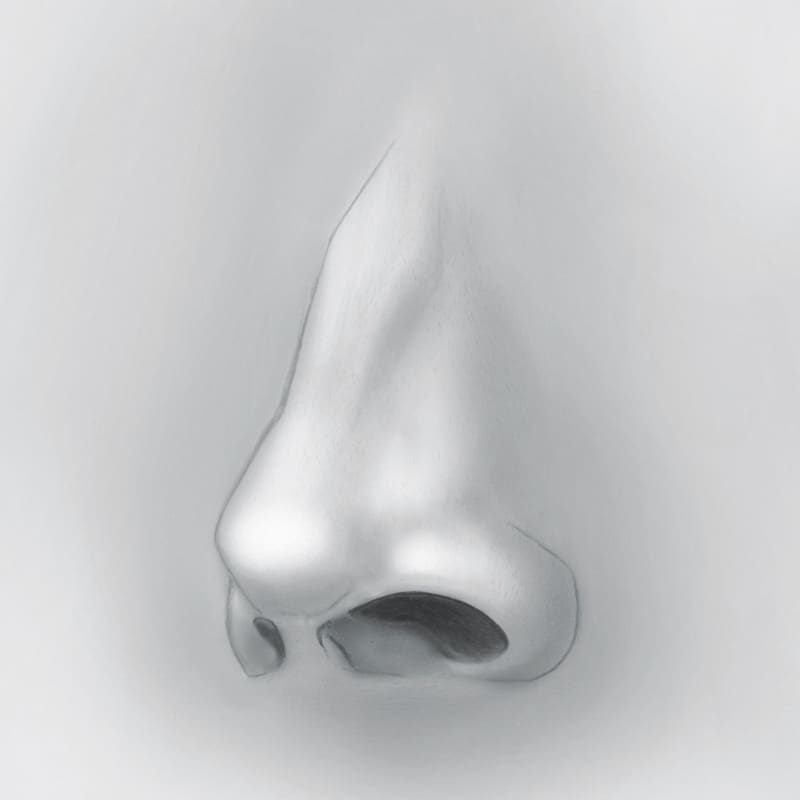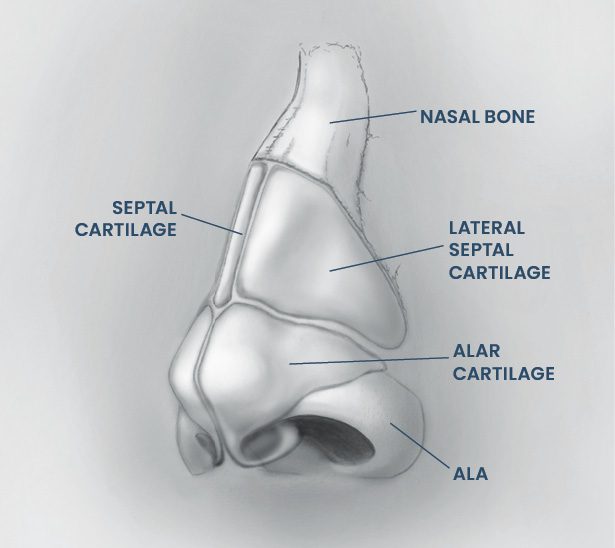Nose Surgery (Rhinoplasty)
There are many aesthetic reasons to undergo a surgical rhinoplasty procedure, commonly referred to as a nose job. Rhinoplasty can address:
• nasal profile with visible bumps or depressions on the bridge (crooked nose)
• nostril asymmetry (nose that is too wide)
• nasal tip that is too round or bulbous nasal tip that is too droopy or turned up
• nose that is too big or too small for the proportions of the face

Treatments
Rhinoplasty is a surgical procedure designed to create facial harmony by reshaping the nose. Anesthesia is given, usually sedation or general is preferred. The surgery can be performed using an open or closed technique. During an open rhinoplasty, a small external incision is made in the area between the nostrils known as the columella. This is extended into the nose. With an open procedure the skin is raised gently over the nasal tip exposing the nasal cartilages and nasal bone. If a closed procedure is performed, the cartilages are delivered through the internal incisions exposing the cartilages.

To refine a nasal tip, the cartilage can be carved to desired symmetric size and reshaped with many techniques. A cartilage graft can be placed over the cartilage for a more profound effect if needed. If the tip is droopy, a graft known as a strut graft can be placed down the columella to support the nasal tip, akin to a kickstand on a bicycle. These cartilage grafts can also be taken from the ear or rib if more graft material is necessary or the nasal septal cartilage is not adequate. A deviated nasal septum can be addressed at this time as well and a piece of the septal cartilage can be used as graft material if needed. The septum is usually closed with sutures.
If the bridge of the nose has a hump, it can be shaved or filed down to make it straight; if a lot is removed or if the bridge of the nose is too wide the sidewall bones must be repositioned by carefully fracturing them.
In a closed rhinoplasty technique, all the incisions are made on the inside of the nostril. Once complete, the incisions on the inside of the nose are stitched closed. If an open technique is performed, the area between the nostrils is sutured closed as well. If bones are repositioned or broken during the procedure, a nasal splint or cast is worn for a week. After the splint and sutures are removed, the nose may swell on and off for up to a year for the final result, but the initial swelling should subside within a few weeks. Bruising and swelling to the nose and eye area is common for the first two weeks.

Risks and Complications
Bleeding and infection, which are potential risks with any surgical procedure, are very uncommon. Be sure to tell your surgeon if you are on blood thinners as their use may put you at increased risk for bleeding complications. There are risks with anesthesia, infection, unsatisfactory appearance, difficulty breathing, contour defects, damage to the nasal septum, and poor wound healing.
Your surgeon cannot control all the variables that may impact your final result. The goal is always to improve a patient’s condition but no guarantees or promises can be made for a successful outcome in any surgical procedure. There is always a chance you will not be satisfied with your results and/or that you will need additional treatment. As with any medical decision, there may be other inherent risks or alternatives that should be discussed with your surgeon.